1. Abundance in the Earth’s Crust
Aluminum is the third most abundant element in the Earth’s crust, constituting about 8.23% by weight. This prevalence is due to its tendency to form various compounds, primarily oxides and silicates. Despite its abundance, pure aluminum is not found naturally because it is highly reactive, readily combining with oxygen and other elements. This reactivity makes the extraction process from ores like bauxite energy-intensive and complex, involving the Bayer process for refining alumina and the Hall-Héroult process for smelting it into aluminum metal.
2. Lightweight and Strong
One of aluminum’s most notable properties is its combination of lightness and strength. With a density of only 2.7 g/cm³, aluminum is about one-third the weight of steel, making it ideal for applications where reducing weight is critical, such as in aerospace, automotive, and packaging industries. Despite its low weight, aluminum can be alloyed with other elements like copper, magnesium, and silicon to enhance its mechanical properties, offering a good strength-to-weight ratio that is highly valued in engineering and construction.
3. Excellent Corrosion Resistance
Aluminum is renowned for its excellent corrosion resistance. When exposed to air, a thin layer of aluminum oxide forms almost instantly on its surface, which acts as a protective barrier against further oxidation. This makes aluminum ideal for use in environments where it is exposed to moisture and chemicals, such as in marine applications, food and beverage packaging, and outdoor structures. This natural resistance to corrosion significantly extends the lifespan of aluminum products, reducing maintenance costs and improving reliability.
4. Electrical Conductivity
While not as conductive as copper, aluminum’s electrical conductivity is about 60% that of copper by volume, making it an attractive alternative in electrical applications. Due to its lower density, aluminum wiring is lighter and often cheaper than copper wiring, which is why it is frequently used in power transmission and distribution networks. Aluminum’s ability to conduct electricity efficiently makes it suitable for high-voltage power lines, electrical grids, and various electronic devices.
5. Recyclability and Sustainability
Aluminum is highly recyclable, with nearly 75% of all aluminum ever produced still in use today. Recycling aluminum requires only about 5% of the energy needed to produce new aluminum from ore, resulting in significant energy savings and reduced greenhouse gas emissions. This recyclability contributes to aluminum’s reputation as a sustainable material, making it a key component in circular economy models. Industries such as automotive, aerospace, and packaging heavily rely on recycled aluminum to reduce their environmental footprint.
6. Heat Conductivity
Aluminum is an excellent conductor of heat, with a thermal conductivity of around 235 W/m·K. This property makes it an ideal material for applications requiring efficient heat dissipation, such as in heat exchangers, cooking utensils, and electronic cooling systems. Aluminum’s ability to rapidly transfer heat ensures that it is widely used in HVAC systems, automotive radiators, and as heat sinks in computers and other electronic devices.
7. Non-Magnetic Properties
Aluminum is non-magnetic, which means it does not interfere with magnetic fields. This property is particularly useful in applications involving sensitive electronic equipment and devices that rely on magnetic fields for operation. For example, aluminum is used in MRI machines, electronic enclosures, and various aerospace applications where non-magnetic materials are essential. Its non-magnetic nature also contributes to its versatility in diverse industrial applications.
8. Reflectivity
Aluminum has a high reflectivity for visible light and infrared radiation, reflecting about 92% of visible light and 98% of infrared light. This property makes aluminum an excellent material for use in reflective surfaces such as mirrors, lighting fixtures, and solar energy panels. Its reflective capabilities also contribute to its use in insulation materials, helping to control temperature and energy efficiency in buildings and spacecraft.
9. Use in Aerospace Industry
Aluminum alloys are extensively used in the aerospace industry due to their favorable strength-to-weight ratio, corrosion resistance, and ease of fabrication. Components such as aircraft frames, wings, and fuselages are often made from aluminum alloys to ensure durability while minimizing weight. The development of high-strength aluminum alloys has enabled the construction of more efficient, longer-lasting aircraft that can carry heavier payloads and consume less fuel.
10. Role in Automotive Industry
In the automotive industry, aluminum is increasingly used to reduce vehicle weight and improve fuel efficiency. Components such as engine blocks, transmission housings, wheels, and body panels are commonly made from aluminum alloys. The use of aluminum helps to meet stringent environmental regulations by lowering CO2 emissions and enhancing vehicle performance. Advances in aluminum manufacturing and joining techniques have further expanded its application in modern automotive design.
11. Applications in Construction
Aluminum is widely used in the construction industry for applications ranging from window frames and roofing to structural components and exterior facades. Its lightweight, strength, and corrosion resistance make it an ideal material for both residential and commercial buildings. Architectural aluminum can be easily extruded into various shapes and profiles, allowing for innovative designs and construction methods that enhance the aesthetic and functional aspects of modern structures.
12. Packaging Uses
Aluminum is a preferred material for packaging due to its barrier properties, which protect contents from light, oxygen, moisture, and contaminants. Aluminum foil, cans, and laminated packaging materials are extensively used in the food and beverage industry to preserve freshness and extend shelf life. Its lightweight nature reduces transportation costs, while its recyclability aligns with sustainable packaging initiatives, making aluminum an environmentally friendly choice for manufacturers and consumers.
13. Manufacturing and Fabrication
Aluminum is highly versatile in manufacturing and fabrication processes. It can be cast, extruded, rolled, and forged into a wide range of shapes and products. The metal’s malleability and ductility allow for intricate designs and precise dimensions, facilitating the production of complex components for various industries. Advanced techniques such as additive manufacturing (3D printing) are also being explored to further enhance the capabilities and applications of aluminum in modern manufacturing.
14. Use in Electrical Transmission Lines
Due to its high conductivity and lightweight properties, aluminum is commonly used in electrical transmission lines. Aluminum conductors are favored for their ability to efficiently transmit electricity over long distances while being less prone to sagging and requiring fewer support structures compared to copper. Innovations in alloy development have improved the strength and conductivity of aluminum cables, making them a reliable choice for power distribution networks.
15. Role in Electronics
Aluminum plays a critical role in the electronics industry. Its excellent thermal and electrical conductivity, combined with its non-magnetic properties, make it ideal for use in components such as heat sinks, capacitors, and enclosures for electronic devices. The metal’s ability to dissipate heat efficiently ensures the reliable operation of electronic circuits and systems, contributing to the performance and longevity of modern electronic products.
16. Impact on Modern Medicine
Aluminum and its compounds are used in various medical applications. For instance, aluminum hydroxide is commonly used as an antacid and phosphate binder, while aluminum foils and packaging are used to ensure the sterility of medical supplies and pharmaceuticals. In medical imaging, aluminum filters help to enhance the quality of X-ray images. The metal’s biocompatibility and versatility make it an important material in the healthcare sector.
17. Use in Consumer Goods
Aluminum is prevalent in numerous consumer goods due to its aesthetic appeal, durability, and lightweight properties. It is used in the production of smartphones, laptops, kitchen appliances, furniture, and sports equipment. The ability to anodize aluminum provides a protective and decorative oxide layer, offering a variety of colors and finishes that enhance the visual and tactile qualities of consumer products.
18. Importance in Renewable Energy
Aluminum is crucial in the renewable energy sector, particularly in the production of solar panels and wind turbines. Its lightweight and corrosion-resistant properties make it suitable for structural components and frames of photovoltaic panels, as well as for the housings and blades of wind turbines. The efficiency and longevity of renewable energy systems are significantly enhanced by the use of aluminum, contributing to the growth of sustainable energy solutions.
19. Role in the Chemical Industry
Aluminum is used in various chemical processes and as a catalyst in some reactions. For example, aluminum chloride is an important catalyst in the Friedel-Crafts reaction for the production of aromatic compounds. Aluminum sulfate is widely used in water treatment plants to purify drinking water and in paper manufacturing as a sizing agent. The metal’s reactivity and availability make it valuable in numerous industrial chemical applications.
20. Innovations in Alloy Development
Research and development in aluminum alloys have led to significant advancements in material properties and applications. Alloys such as 2024, 6061, and 7075 offer enhanced strength, corrosion resistance, and machinability, catering to specific needs in aerospace, automotive, and construction industries. Continuous innovation in alloy composition and processing techniques aims to further improve the performance and sustainability of aluminum products.
21. Impact on Sustainability and Energy Efficiency
Aluminum’s role in sustainability and energy efficiency is multifaceted. Its recyclability and the low energy requirement for recycling contribute to a reduced carbon footprint. In construction, aluminum’s use in energy-efficient windows, insulation, and reflective roofing materials helps to lower energy consumption in buildings. In transportation, aluminum’s lightweight properties reduce fuel consumption and emissions, supporting environmental goals and regulatory compliance.
22. Historical Development and Discovery
The discovery and development of aluminum as a commercially viable material have a rich history. Although aluminum compounds were known to ancient civilizations, it was not until 1825 that Danish physicist Hans Christian Ørsted successfully isolated the metal. The commercialization of aluminum began with the development of the Hall-Héroult process in 1886, which enabled the large-scale production of aluminum and revolutionized industries by providing a lightweight, versatile metal.
23. Strategic Material in Defense
Aluminum is considered a strategic material in the defense sector due to its lightweight and durable properties. It is used in the manufacturing of military vehicles, aircraft, naval vessels, and personal protective equipment. Aluminum’s ability to enhance mobility and performance while providing adequate protection makes it a critical material in modern defense applications. Advances in aluminum alloy technology continue to support the development of more effective and resilient military equipment.
24. Influence on Transportation Innovation
Aluminum has played a significant role in the evolution of transportation. From early uses in aviation to its current applications in automotive and railway industries, aluminum has enabled the design and production of faster, lighter, and more fuel-efficient vehicles. Innovations such as aluminum-intensive car bodies and lightweight railcars demonstrate the metal’s ongoing impact on improving transportation efficiency and sustainability.
25. Applications in Marine Industry
Aluminum is widely used in the marine industry for building ships, boats, and offshore structures. Its resistance to corrosion in seawater and its lightweight properties make it ideal for maritime applications. Aluminum alloys are used in the construction of hulls, superstructures, and marine hardware, providing durability and reducing maintenance requirements. The use of aluminum in marine engineering helps improve vessel performance and operational efficiency.
26. Role in Construction and Infrastructure
Aluminum’s versatility and strength make it a valuable material in construction and infrastructure projects. Its use in curtain walls, cladding, roofing, and structural frameworks contributes to the aesthetic and functional qualities of modern buildings. Aluminum’s recyclability and resistance to corrosion ensure long-lasting and sustainable construction solutions, making it a preferred material for architects and engineers.
27. Impact on Space Exploration
Aluminum alloys are crucial in space exploration, where weight reduction and durability are paramount. The metal is used in the construction of spacecraft, satellites, and space station modules, providing the necessary structural integrity while minimizing launch weight. Aluminum’s ability to withstand extreme temperatures and radiation in space environments makes it indispensable for advancing space missions and technology.
28. Advancements in Manufacturing Techniques
Continuous advancements in manufacturing techniques have expanded the applications of aluminum. Methods such as extrusion, rolling, forging, and additive manufacturing enable the production of complex and high-performance aluminum components. These advancements improve material properties, reduce production costs, and enhance the competitiveness of aluminum in various industries, driving innovation and economic growth.
29. Importance in Environmental Protection
Aluminum plays a role in environmental protection through its use in air and water purification systems. Aluminum-based compounds are used in the treatment of wastewater and the purification of drinking water, removing impurities and ensuring water quality. The metal’s recyclability and energy efficiency also contribute to environmental conservation efforts, supporting sustainable development and resource management.
30. Cultural and Economic Significance
Aluminum has significant cultural and economic importance, impacting various aspects of society. Its use in everyday products, industrial applications, and technological advancements has shaped modern living standards and economic development. The aluminum industry generates substantial employment and contributes to the global economy through mining, production, and recycling activities. Its widespread availability and versatility ensure its continued relevance in the future.
31. Advanced Aerospace Alloys
Recent developments in aerospace aluminum alloys, such as the Aluminum-Lithium (Al-Li) alloys, have revolutionized the industry. These alloys provide significant weight savings, improved corrosion resistance, and increased strength. By incorporating lithium, the density of the alloy is reduced, enhancing fuel efficiency and payload capacity in aircraft. These advancements ensure that aluminum remains a cornerstone material in aerospace engineering, supporting innovations in commercial and military aviation.
32. Aluminum in Additive Manufacturing
Additive manufacturing, or 3D printing, has opened new possibilities for aluminum applications. Aluminum powders are used in selective laser melting (SLM) and electron beam melting (EBM) processes to create complex, high-performance parts with reduced material waste. This technology allows for rapid prototyping and the production of components with intricate geometries, which are difficult or impossible to achieve with traditional manufacturing methods. The use of aluminum in additive manufacturing is particularly advantageous in industries such as aerospace, automotive, and medical devices.
33. Architectural Aesthetics
In architecture, aluminum is valued for its aesthetic flexibility and structural capabilities. Anodized and powder-coated finishes provide architects with a wide range of colors and textures, enhancing the visual appeal of buildings. Additionally, aluminum’s ability to be extruded into various profiles allows for innovative design solutions in curtain walls, facades, and decorative elements. Its combination of beauty and functionality makes aluminum a preferred material in modern architecture, promoting both form and function.
34. Environmental and Health Concerns
Despite its many benefits, the production and use of aluminum have raised environmental and health concerns. The extraction and refining of bauxite can lead to deforestation, habitat destruction, and pollution. Additionally, aluminum exposure has been associated with potential health risks, such as neurotoxicity and respiratory issues, although more research is needed to fully understand these effects. To address these concerns, the industry is adopting more sustainable practices, including improving mining techniques, reducing emissions, and enhancing recycling programs.
35. Role in Hydrogen Storage
Aluminum is being explored as a material for hydrogen storage, which is critical for the development of hydrogen fuel cell technology. Aluminum’s ability to form stable hydrides and its high volumetric hydrogen density make it a promising candidate for safe and efficient hydrogen storage solutions. Research into aluminum-based materials aims to overcome challenges related to hydrogen absorption and desorption kinetics, contributing to the advancement of clean energy technologies.
36. Applications in Sporting Goods
Aluminum is widely used in the manufacturing of sporting goods due to its lightweight and durable properties. Items such as bicycles, baseball bats, tennis rackets, and golf clubs benefit from aluminum’s strength and resistance to impact. The metal’s ability to be precisely engineered allows for the customization of sporting equipment to enhance performance and user comfort. The use of aluminum in sports technology supports the development of high-performance gear for athletes at all levels.
37. Advancements in Surface Treatments
Innovative surface treatments for aluminum, such as hard anodizing and plasma electrolytic oxidation (PEO), have improved its wear resistance, hardness, and corrosion protection. These treatments enhance the durability and lifespan of aluminum components in demanding applications, including automotive, aerospace, and industrial machinery. By modifying the surface properties of aluminum, manufacturers can achieve superior performance and extend the range of applications for this versatile metal.
38. Role in Energy Storage Systems
Aluminum is playing a growing role in energy storage systems, particularly in batteries and capacitors. Aluminum-ion batteries are being developed as a potential alternative to lithium-ion batteries, offering advantages such as higher charge and discharge rates, increased safety, and lower cost. Aluminum’s electrochemical properties and abundance make it an attractive material for energy storage technologies, which are essential for the expansion of renewable energy and electric mobility.
39. Use in Automotive Lightweighting
The trend towards automotive lightweighting is driving increased use of aluminum in vehicle design. Lightweight aluminum components help reduce the overall weight of vehicles, improving fuel efficiency and reducing emissions. Innovations such as aluminum-intensive platforms and multi-material joining techniques enable the integration of aluminum with other materials, optimizing performance and safety. The automotive industry’s commitment to sustainability and efficiency continues to drive advancements in aluminum applications.
40. Role in Heat Exchangers
Aluminum’s excellent thermal conductivity and resistance to corrosion make it an ideal material for heat exchangers. These devices are used in a variety of applications, including HVAC systems, refrigeration, automotive cooling systems, and industrial processes. Aluminum heat exchangers efficiently transfer heat while being lightweight and cost-effective. Their durability and performance contribute to the reliability and efficiency of thermal management systems across industries.
41. Impact on Nanotechnology
Aluminum is making significant contributions to nanotechnology, particularly in the development of nanomaterials and nano-coatings. Aluminum nanoparticles exhibit unique properties, such as high reactivity and enhanced catalytic activity, making them useful in applications ranging from fuel cells to biomedical devices. Nano-coatings of aluminum oxide provide superior protection against wear, corrosion, and high temperatures, extending the lifespan and performance of various products.
42. Use in Renewable Energy Infrastructure
Aluminum is essential in the infrastructure of renewable energy systems, including solar power plants and wind farms. Its use in solar panel frames and wind turbine components enhances durability and reduces maintenance costs. The metal’s light weight and corrosion resistance are particularly beneficial in harsh environmental conditions, ensuring reliable and long-term operation of renewable energy installations. Aluminum’s role in supporting sustainable energy solutions is crucial for the transition to a low-carbon economy.
43. Role in Telecommunications
Aluminum is used extensively in the telecommunications industry for its lightweight and conductive properties. Components such as antennas, cables, and satellite dishes benefit from aluminum’s ability to transmit signals efficiently while withstanding environmental factors. The metal’s use in telecommunications infrastructure supports the reliable delivery of communication services, contributing to global connectivity and the advancement of digital technologies.
44. Applications in Food and Beverage Industry
In the food and beverage industry, aluminum is used for packaging due to its ability to preserve freshness and protect contents from contamination. Aluminum cans, foils, and laminated packaging materials provide a barrier against light, oxygen, and moisture, extending the shelf life of products. The recyclability of aluminum packaging aligns with sustainability goals, reducing waste and conserving resources. Its versatility and protective qualities make aluminum a preferred material in food and beverage packaging.
45. Aluminum in Art and Design
Artists and designers often use aluminum for its aesthetic appeal and versatility. Sculptures, installations, and decorative objects made from aluminum can be anodized, polished, or textured to achieve a variety of finishes. The metal’s light weight and ease of fabrication allow for innovative and intricate designs. Aluminum’s use in art and design highlights its cultural significance and its ability to inspire creativity and innovation.
46. Innovations in Recycling Technology
Advancements in recycling technology are enhancing the efficiency and sustainability of aluminum recycling. Techniques such as laser-induced breakdown spectroscopy (LIBS) and advanced sorting systems improve the separation and purification of aluminum scrap. These innovations reduce energy consumption, minimize waste, and increase the yield of high-quality recycled aluminum. The development of more efficient recycling processes supports the circular economy and the sustainable use of aluminum resources.
47. Role in Green Building Standards
Aluminum is a key material in green building standards, such as LEED (Leadership in Energy and Environmental Design) and BREEAM (Building Research Establishment Environmental Assessment Method). Its use in energy-efficient windows, roofing, and insulation contributes to the overall sustainability and energy performance of buildings. The metal’s recyclability and low environmental impact during production further enhance its suitability for green construction projects. Aluminum’s role in promoting sustainable building practices supports environmental conservation and resource efficiency.
48. Use in High-Temperature Applications
Aluminum alloys are used in high-temperature applications due to their ability to retain strength and resist oxidation at elevated temperatures. Components such as engine parts, heat shields, and industrial furnaces benefit from aluminum’s thermal stability and conductivity. The development of high-temperature aluminum alloys extends the range of applications for the metal, enabling its use in demanding environments and enhancing the performance of heat-resistant components.
49. Contributions to Circular Economy
Aluminum’s recyclability makes it a cornerstone of the circular economy, where materials are reused and recycled to minimize waste and resource consumption. The aluminum industry is committed to increasing recycling rates and reducing the environmental impact of production. By incorporating recycled aluminum into new products, manufacturers conserve energy, reduce emissions, and promote sustainable resource management. Aluminum’s role in the circular economy supports the transition to more sustainable industrial practices.
50. Use in Hydrogen Production
Aluminum is being explored as a material for hydrogen production through processes such as aluminum-water reactions. When aluminum reacts with water, it produces hydrogen gas and aluminum hydroxide. This reaction can be harnessed for on-demand hydrogen generation, providing a potential clean energy source for fuel cells and other applications. Research into aluminum-based hydrogen production technologies aims to develop efficient and scalable methods for sustainable energy generation.
51. Role in Photovoltaic Cells
Aluminum is used in the manufacturing of photovoltaic cells, where it serves as a conductive and reflective material. Aluminum back sheets and frames provide structural support and enhance the efficiency of solar panels by reflecting sunlight onto the active layers. The metal’s durability and corrosion resistance ensure the longevity of solar installations, making aluminum a critical component in the deployment of solar energy systems. Its role in photovoltaic technology supports the growth of renewable energy.
52. Influence on Automotive Safety
Aluminum’s strength and energy absorption capabilities contribute to automotive safety. The use of aluminum in crash structures, such as bumpers and crumple zones, helps to dissipate impact energy and protect occupants in the event of a collision. Aluminum’s ability to form strong yet lightweight components enhances vehicle safety without compromising performance. Innovations in aluminum alloy development continue to improve the safety features of modern vehicles.
53. Use in Electrical Contacts
Aluminum is used in electrical contacts due to its good conductivity and resistance to corrosion. Electrical connectors, switchgear, and circuit breakers benefit from aluminum’s ability to maintain reliable electrical connections over time. The metal’s lightweight nature and cost-effectiveness make it a preferred choice for high-voltage and high-current applications. Aluminum’s use in electrical contacts supports the efficient and safe operation of electrical systems.
54. Contributions to Advanced Manufacturing
Advanced manufacturing techniques, such as friction stir welding (FSW) and high-speed machining, have enhanced the applications of aluminum in various industries. These techniques improve the mechanical properties and dimensional accuracy of aluminum components, enabling the production of complex and high-performance parts. The integration of advanced manufacturing methods with aluminum materials drives innovation and efficiency in industries such as aerospace, automotive, and construction.
55. Role in Aerospace Propulsion
Aluminum alloys are used in aerospace propulsion systems, including rocket engines and jet turbines. Their high strength-to-weight ratio and thermal conductivity make them suitable for components such as engine casings, compressor blades, and fuel tanks. The development of advanced aluminum alloys for propulsion applications enhances the performance and efficiency of aerospace engines, supporting advancements in space exploration and aviation technology.
56. Use in Water Treatment
Aluminum compounds, such as aluminum sulfate and aluminum chloride, are used in water treatment processes to remove impurities and contaminants. These compounds act as coagulants, causing suspended particles to clump together and settle out of the water. The use of aluminum in water treatment ensures the provision of clean and safe drinking water, supporting public health and environmental protection. Aluminum-based water treatment technologies are essential for maintaining water quality and sustainability.
57. Impact on Energy-Efficient Lighting
Aluminum is used in energy-efficient lighting systems, including LED (light-emitting diode) fixtures and reflectors. Its high reflectivity and thermal conductivity enhance the performance and lifespan of LED lights by efficiently dissipating heat and directing light. Aluminum’s use in lighting technology supports the development of sustainable and cost-effective lighting solutions, reducing energy consumption and environmental impact.
58. Role in Thermoforming
Thermoforming of aluminum is a process used to create lightweight and durable components for various applications. This technique involves heating aluminum sheets to a pliable temperature and then forming them into specific shapes using molds. Thermoformed aluminum parts are used in industries such as automotive, aerospace, and packaging, where precision and performance are critical. The ability to thermoform aluminum expands its versatility and application potential.
59. Use in Aerospace Fasteners
Aluminum fasteners are essential components in aerospace applications, providing secure and lightweight connections for structural elements. Rivets, bolts, and screws made from aluminum alloys offer high strength and corrosion resistance, ensuring the integrity and safety of aircraft structures. The development of advanced aluminum fasteners supports the assembly and maintenance of modern aircraft, contributing to their performance and reliability.
60. Innovations in Coating Technologies
Innovative coating technologies, such as nano-coatings and self-healing coatings, enhance the performance of aluminum products. These coatings provide additional protection against corrosion, wear, and environmental factors, extending the lifespan and functionality of aluminum components. Research into advanced coating methods aims to develop more effective and sustainable solutions for protecting aluminum surfaces, supporting its use in demanding applications.
61. Role in Aerospace Composites
Aluminum is often used in combination with other materials to form aerospace composites, which offer superior strength, weight reduction, and resistance to environmental factors. These composites are used in critical aircraft structures, such as fuselage sections and wing assemblies. The integration of aluminum with carbon fiber and other high-performance materials results in enhanced mechanical properties, contributing to the efficiency and longevity of modern aircraft.
62. Applications in Automotive Body Structures
In the automotive industry, aluminum is increasingly used in body structures to improve fuel efficiency and performance. High-strength aluminum alloys are employed in the construction of vehicle frames, doors, hoods, and other components. This use of aluminum reduces the overall weight of vehicles, enhancing acceleration, braking, and handling. Advances in aluminum joining technologies, such as adhesive bonding and laser welding, support the integration of aluminum in automotive manufacturing.
63. Use in Electrical Insulation
Aluminum oxide (Al2O3) is used as an electrical insulator in various applications due to its high thermal stability and dielectric strength. It is commonly used in components such as spark plugs, capacitors, and semiconductor substrates. The insulating properties of aluminum oxide ensure the efficient operation of electrical systems and protect against electrical breakdowns. Its use in electrical insulation supports the reliability and safety of electronic devices and systems.
64. Impact on Agricultural Equipment
Aluminum is used in the manufacturing of agricultural equipment, providing lightweight and durable solutions for farming operations. Components such as irrigation systems, greenhouse structures, and machinery parts benefit from aluminum’s resistance to corrosion and environmental conditions. The use of aluminum in agriculture enhances the efficiency and longevity of equipment, supporting sustainable farming practices and food production.
65. Role in Cryogenic Applications
Aluminum is ideal for cryogenic applications due to its excellent mechanical properties at low temperatures. It is used in the construction of cryogenic tanks, pipes, and heat exchangers for the storage and transportation of liquefied gases such as LNG (liquefied natural gas) and liquid hydrogen. Aluminum’s ability to maintain strength and ductility at cryogenic temperatures ensures the safety and reliability of these systems, supporting advancements in energy and aerospace industries.
66. Use in Composite Materials
Aluminum is often combined with other materials to form composites that offer enhanced properties. Aluminum matrix composites (AMCs) incorporate ceramic particles or fibers to improve strength, stiffness, and wear resistance. These composites are used in applications such as automotive engine components, aerospace structures, and sports equipment. The development of aluminum-based composites expands the performance capabilities and applications of aluminum, driving innovation in materials science.
67. Contributions to Environmental Monitoring
Aluminum is used in environmental monitoring equipment due to its corrosion resistance and lightweight properties. Devices such as air quality monitors, water testing kits, and weather stations benefit from aluminum’s durability and performance in harsh conditions. The use of aluminum in environmental monitoring supports the accurate and reliable collection of data, contributing to the protection and management of natural resources.
68. Role in Military Applications
In military applications, aluminum is used for its combination of strength, lightweight, and resistance to corrosion. It is used in the manufacturing of military vehicles, armor, and weaponry, providing enhanced mobility and protection. Aluminum alloys are also employed in the construction of naval vessels and aircraft, supporting the performance and operational efficiency of defense systems. The strategic importance of aluminum in military applications ensures its continued development and use in defense technologies.
69. Use in Marine Engineering
In marine engineering, aluminum is used for the construction of ships, boats, and offshore platforms. Its resistance to seawater corrosion and lightweight properties make it ideal for marine applications. Aluminum alloys are used in hulls, superstructures, and marine hardware, providing durability and reducing maintenance requirements. The use of aluminum in marine engineering enhances the performance and lifespan of vessels and offshore structures.
70. Advancements in Aluminum Forming
Innovative aluminum forming techniques, such as hydroforming and superplastic forming, have expanded the capabilities and applications of aluminum. These techniques allow for the production of complex shapes and high-performance components with precise dimensions and improved material properties. The advancements in aluminum forming support the development of lightweight and efficient structures for various industries, including automotive, aerospace, and construction.
71. Role in Fuel Efficiency
Aluminum plays a critical role in improving fuel efficiency in transportation. Its lightweight properties reduce the overall weight of vehicles, leading to lower fuel consumption and emissions. Aluminum components such as engine blocks, cylinder heads, and wheels contribute to the optimization of vehicle performance. The use of aluminum in transportation supports environmental sustainability and compliance with stringent fuel efficiency standards.
72. Use in Medical Devices
Aluminum is widely used in the manufacturing of medical devices due to its biocompatibility and ease of sterilization. Surgical instruments, diagnostic equipment, and prosthetic components benefit from aluminum’s strength, lightweight, and corrosion resistance. The development of advanced aluminum alloys and surface treatments further enhances the performance and safety of medical devices, supporting advancements in healthcare and patient care.
73. Impact on Advanced Alloys
The development of advanced aluminum alloys has significantly impacted various industries. These alloys offer improved mechanical properties, such as increased strength, corrosion resistance, and thermal stability. They are used in applications ranging from aerospace and automotive to construction and electronics. The continuous innovation in alloy design and processing techniques ensures that aluminum remains a versatile and high-performance material.
74. Role in Lightweight Structures
Aluminum is essential for the construction of lightweight structures in various applications. Its high strength-to-weight ratio makes it suitable for use in bridges, towers, and large-scale frameworks. The use of aluminum in these structures reduces the overall weight, facilitating easier transportation and installation while maintaining structural integrity. The development of advanced fabrication techniques enhances the capabilities of aluminum in lightweight construction.
75. Contributions to High-Strength Applications
High-strength aluminum alloys are used in applications requiring exceptional mechanical properties. These alloys, such as 7075 and 2024, are used in aerospace, automotive, and defense industries for components subjected to high stress and load conditions. The ability to combine strength with lightweight properties makes high-strength aluminum alloys indispensable in critical applications. Research into alloying elements and heat treatment processes continues to enhance the performance of these materials.
76. Use in Architectural Cladding
Aluminum is widely used in architectural cladding for its aesthetic and protective qualities. Aluminum panels and sheets are used to cover building exteriors, providing a modern and sleek appearance while protecting the structure from weather and environmental damage. The use of aluminum cladding enhances the energy efficiency, durability, and visual appeal of buildings. Advanced coating technologies further improve the performance and longevity of aluminum cladding systems.
77. Role in Automotive Crash Management Systems
Aluminum is used in automotive crash management systems to improve vehicle safety. Components such as bumper beams, crash boxes, and side impact beams are made from aluminum alloys to absorb and dissipate impact energy during collisions. The lightweight and high-strength properties of aluminum enhance the effectiveness of crash management systems, reducing the risk of injury to occupants and improving overall vehicle safety.
78. Impact on Marine Transportation
Aluminum is used extensively in marine transportation for the construction of ships, ferries, and recreational boats. Its corrosion resistance, lightweight, and strength make it ideal for marine environments. Aluminum hulls and superstructures reduce the weight of vessels, improving fuel efficiency and performance. The use of aluminum in marine transportation supports the development of durable and efficient vessels that meet the demands of modern shipping and recreational boating.
79. Contributions to Electromagnetic Shielding
Aluminum is used in electromagnetic shielding applications to protect electronic devices from electromagnetic interference (EMI). Aluminum enclosures, coatings, and foils provide effective barriers against EMI, ensuring the reliable operation of sensitive electronic equipment. The use of aluminum in electromagnetic shielding supports the performance and safety of electronic systems in various industries, including telecommunications, aerospace, and medical devices.
80. Role in Advanced Manufacturing Processes
Advanced manufacturing processes, such as additive manufacturing and high-precision machining, have expanded the applications of aluminum. These processes enable the production of complex and high-performance aluminum components with reduced material waste and improved efficiency. The integration of advanced manufacturing techniques with aluminum materials drives innovation and competitiveness in industries such as aerospace, automotive, and electronics.
81. Use in Aerospace Structures
Aluminum is a fundamental material in the construction of aerospace structures, providing the necessary strength, weight savings, and durability. Aircraft fuselages, wings, and tail sections are commonly made from aluminum alloys to ensure structural integrity and performance. The use of aluminum in aerospace structures supports the development of efficient and reliable aircraft, contributing to advancements in aviation technology.
82. Role in Renewable Energy Solutions
Aluminum plays a vital role in renewable energy solutions, particularly in the construction of wind turbines and solar panels. Aluminum’s lightweight and corrosion-resistant properties make it suitable for the structural components and frames of renewable energy systems. The use of aluminum in these applications enhances the efficiency, durability, and maintenance of renewable energy installations, supporting the growth of sustainable energy sources.
83. Contributions to Automotive Emissions Reduction
Aluminum is used in the automotive industry to reduce emissions and improve fuel efficiency. The lightweight properties of aluminum help lower the overall weight of vehicles, leading to reduced fuel consumption and lower CO2 emissions. Aluminum components such as engine blocks, cylinder heads, and body panels contribute to the development of environmentally friendly and fuel-efficient vehicles, supporting global efforts to reduce greenhouse gas emissions.
84. Use in Medical Imaging Equipment
Aluminum is used in medical imaging equipment for its lightweight and non-magnetic properties. Components such as X-ray and MRI machine frames, housings, and shielding are made from aluminum to ensure accurate imaging and patient safety. The use of aluminum in medical imaging equipment supports the development of advanced diagnostic technologies and enhances the quality of healthcare.
85. Impact on Lightweight Construction Materials
Aluminum is a key material in the development of lightweight construction materials. Its high strength-to-weight ratio, corrosion resistance, and versatility make it suitable for use in building frameworks, facades, and roofing systems. The use of aluminum in construction materials reduces the overall weight of structures, facilitating easier transportation and installation while maintaining structural integrity. Advances in aluminum alloy technology and fabrication methods continue to expand its applications in lightweight construction.
86. Role in Advanced Coating Technologies
Advanced coating technologies, such as plasma spraying and anodizing, enhance the performance and durability of aluminum products. These coatings provide additional protection against wear, corrosion, and environmental factors, extending the lifespan and functionality of aluminum components. Research into innovative coating methods aims to develop more effective and sustainable solutions for protecting aluminum surfaces, supporting its use in demanding applications.
87. Use in Aerospace Fasteners and Joints
Aluminum fasteners and joints are essential components in aerospace applications, providing secure and lightweight connections for structural elements. Rivets, bolts, and screws made from aluminum alloys offer high strength and corrosion resistance, ensuring the integrity and safety of aircraft structures. The development of advanced aluminum fasteners supports the assembly and maintenance of modern aircraft, contributing to their performance and reliability.
88. Contributions to Heat Transfer Solutions
Aluminum’s excellent thermal conductivity makes it ideal for heat transfer solutions in various applications. Heat exchangers, radiators, and cooling systems benefit from aluminum’s ability to efficiently transfer heat while being lightweight and cost-effective. The use of aluminum in heat transfer solutions enhances the performance and efficiency of thermal management systems across industries, including automotive, aerospace, and electronics.
89. Impact on Advanced Sensor Technologies
Aluminum is used in advanced sensor technologies for its lightweight, durable, and conductive properties. Sensors for applications such as environmental monitoring, industrial automation, and medical diagnostics benefit from aluminum’s performance and reliability. The use of aluminum in sensor technology supports the development of accurate and efficient sensing solutions, contributing to advancements in various fields.
90. Role in High-Strength Structural Applications
High-strength aluminum alloys are used in structural applications requiring exceptional mechanical properties. These alloys, such as 7075 and 2024, are used in aerospace, automotive, and defense industries for components subjected to high stress and load conditions. The ability to combine strength with lightweight properties makes high-strength aluminum alloys indispensable in critical applications. Research into alloying elements and heat treatment processes continues to enhance the performance of these materials.
91. Use in Marine Engineering
In marine engineering, aluminum is used for the construction of ships, boats, and offshore platforms. Its resistance to seawater corrosion and lightweight properties make it ideal for marine applications. Aluminum alloys are used in hulls, superstructures, and marine hardware, providing durability and reducing maintenance requirements. The use of aluminum in marine engineering enhances the performance and lifespan of vessels and offshore structures.
92. Applications in High-Pressure Environments
Aluminum is used in high-pressure environments due to its strength and resistance to corrosion. Components such as pressure vessels, pipelines, and hydraulic systems benefit from aluminum’s ability to withstand extreme conditions while maintaining performance and reliability. The use of aluminum in high-pressure applications supports the safe and efficient operation of critical systems in industries such as oil and gas, chemical processing, and aerospace.
93. Role in Advanced Transportation Systems
Aluminum is playing a growing role in the development of advanced transportation systems, including electric vehicles (EVs) and high-speed trains. The lightweight properties of aluminum contribute to the efficiency and performance of these systems by reducing energy consumption and enhancing acceleration and braking. The use of aluminum in advanced transportation systems supports the transition to sustainable and innovative mobility solutions.
94. Contributions to Aerospace Propulsion
Aluminum alloys are used in aerospace propulsion systems, including rocket engines and jet turbines. Their high strength-to-weight ratio and thermal conductivity make them suitable for components such as engine casings, compressor blades, and fuel tanks. The development of advanced aluminum alloys for propulsion applications enhances the performance and efficiency of aerospace engines, supporting advancements in space exploration and aviation technology.
95. Use in Structural Engineering
In structural engineering, aluminum is used for its combination of strength, lightweight, and durability. Bridges, towers, and large-scale frameworks benefit from aluminum’s properties, facilitating easier transportation and installation while maintaining structural integrity. The development of advanced fabrication techniques enhances the capabilities of aluminum in structural engineering, supporting the construction of efficient and reliable structures.
96. Impact on Energy-Efficient Technologies
Aluminum is used in energy-efficient technologies, including LED (light-emitting diode) lighting and solar power systems. Its high reflectivity and thermal conductivity enhance the performance and lifespan of LED lights by efficiently dissipating heat and directing light. Aluminum frames and components in solar panels improve their durability and efficiency, supporting the growth of renewable energy solutions. The use of aluminum in energy-efficient technologies contributes to sustainability and reduced environmental impact.
97. Role in Food and Beverage Industry
In the food and beverage industry, aluminum is used for packaging due to its ability to preserve freshness and protect contents from contamination. Aluminum cans, foils, and laminated packaging materials provide a barrier against light, oxygen, and moisture, extending the shelf life of products. The recyclability of aluminum packaging aligns with sustainability goals, reducing waste and conserving resources. Its versatility and protective qualities make aluminum a preferred material in food and beverage packaging.
98. Contributions to Advanced Coating Technologies
Advanced coating technologies, such as plasma spraying and anodizing, enhance the performance and durability of aluminum products. These coatings provide additional protection against wear, corrosion, and environmental factors, extending the lifespan and functionality of aluminum components. Research into innovative coating methods aims to develop more effective and sustainable solutions for protecting aluminum surfaces, supporting its use in demanding applications.
99. Use in High-Temperature Applications
Aluminum alloys are used in high-temperature applications due to their ability to retain strength and resist oxidation at elevated temperatures. Components such as engine parts, heat shields, and industrial furnaces benefit from aluminum’s thermal stability and conductivity. The development of high-temperature aluminum alloys extends the range of applications for the metal, enabling its use in demanding environments and enhancing the performance of heat-resistant components.
100. Role in Advanced Transportation Systems
Aluminum is playing a growing role in the development of advanced transportation systems, including electric vehicles (EVs) and high-speed trains. The lightweight properties of aluminum contribute to the efficiency and performance of these systems by reducing energy consumption and enhancing acceleration and braking. The use of aluminum in advanced transportation systems supports the transition to sustainable and innovative mobility solutions.


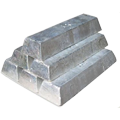
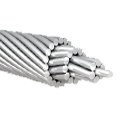
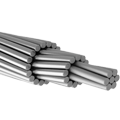
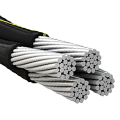
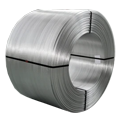
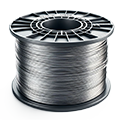








No comment